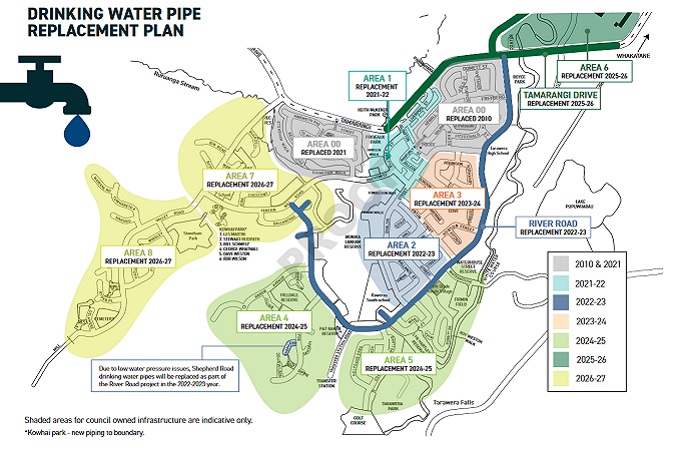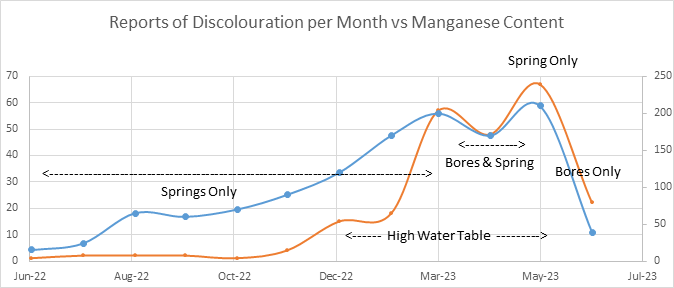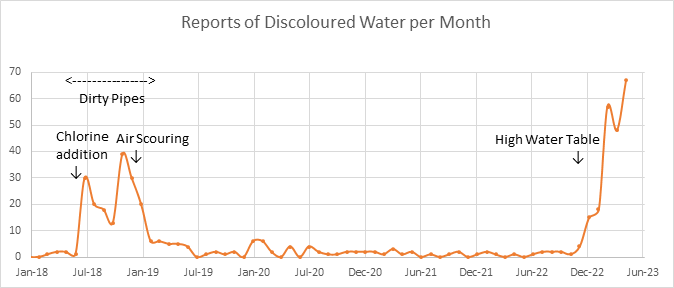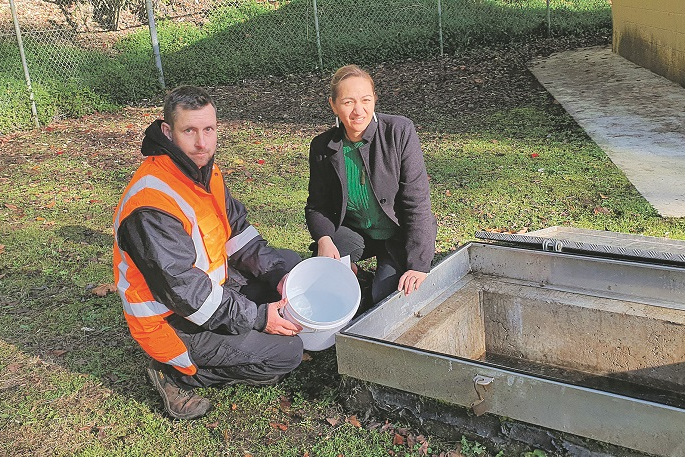Kawerau District Council says that after months of investigation, the cause of the brown water coming from people's taps is becoming clearer, and hopefully the water will follow suit.
The council's water services team have been working hard to get to the bottom of the sporadic brown colouring of the water, says Mayor Faylene Tunui.
'We've got a very intricate system of 70-odd kilometres of pipes, and just under 10 million litres of water that are held in the reservoirs. They've been looking into every nook and cranny of that system.”
She says contrary to accusations made through social media that nothing was being done about it, the team had worked hard to solve the issue since people began reporting brown water to the council in December, even through holidays.
'They are the kaitiaki, they are the guardians that look after the system every day."

Drinking water pipe replacement plan. Image: Kawerau District Council.
Operations and services manager Hanno Van der Merwe says the council used three water sources to supply the town, the Tarawera bore, the Umukaraka spring and Te Wai o Marukaa, known colloquially as the Pumphouse spring.
For the next three weeks, the council would change its water source to the Tarawera bore as higher than usual levels of manganese had been traced to the Marukaa spring.
Hanno says due to heavy rainfall over the past six months, the council stopped taking water from the Umukaraka spring in December, because of the possibility of contamination of the spring from increased levels of groundwater.
The council has been using the Marukaa spring, which has been reliably supplying the town for the past 70 years. However, Hanno says tests showed the spring had recently been showing increased levels of manganese, which turns brown when it is mixed with chlorine. This was most likely caused by high ground water levels.
At 0.2 milligrams per litre, it is still only half the maximum allowable value of manganese required for New Zealand drinking water standards, making it safe to drink. However, this was quadruple the level the spring was producing previously.
He says it took some time for the water to turn brown once the chlorine was added. Though the system of underwater pipes had areas where water moved quite fast, it also had 'dead spots” where it could sit for some time.
This explained why the issue affected some homes more than others and was worse first thing in the morning when the taps were first turned on.

This graph supplied by Kawerau District Council shows how numbers of reports of brown water co-relate to amounts of manganese measured in the water supply.
While changing the water source was hoped to alleviate the brown water, it was possible that a build-up of manganese and iron from existing pipes could still be released through exposure to chlorine, before the seven-year pipe replacement programme is completed in 2027.
Hanno says that, though the spring water was tested frequently to ensure it met drinking water standards, if they were not adding chlorine to the water the manganese levels would not be detectable to the end users.

This graph supplied by Kawerau District Council shows that complaints of discolouration of water first started in 2018 at the time chlorine was added to the water supply. It also note that discolouration complaints dropped after the air scouring of the reticulation system shortly afterwards and how they increased again in December last year as ground water levels rose.
Local Democracy Reporting was shown the crystal clear water coming from the Marukaa spring before it is treated with chlorine. This water is still available to the public, untreated with chlorine, from taps near the source.
He says the water does not need to be chlorinated when taken directly from the source, as chlorination is only a precaution against secondary contamination through the reticulation system.
The council's three waters' team leader Glen Penny says finding the source of the issue had been challenging because there had been multiple factors that could be adding to the issue.
'We've been working through different procedures to eliminate what the cause is, which takes time. It's not just an overnight resolution.”
At the same time, the council had been working on the water pipe replacement project, which could potentially have been another contributing factor.
Mayor Tunui says the council had received a lot of criticism for chlorinating the water, which it started doing in 2018. However, it was not something the council has a choice about.
She says the council was sent a letter by the Medical Officer of Health in July 2018 directing them to add chlorine to ensure the safety of water.
She says if they had failed to do so Hanno could have been prosecuted for endangering the public.



0 comments
Leave a Comment
You must be logged in to make a comment.